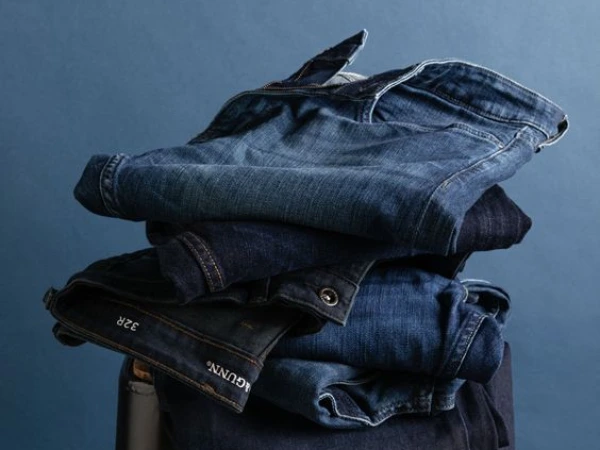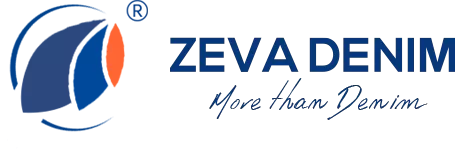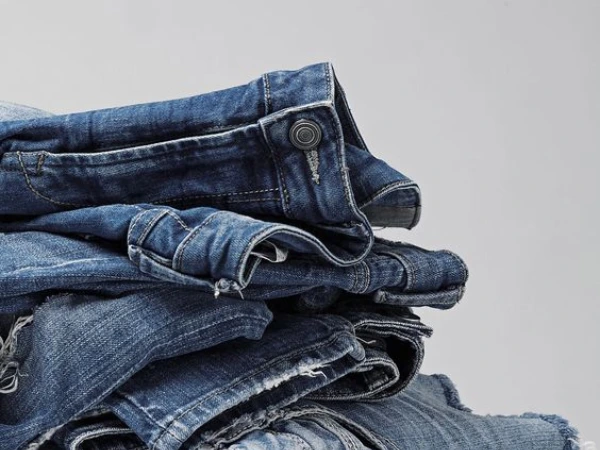With its durability, resistance to wear and tear, and insulation properties, heavy denim fabric proves to be an advantageous material for various applications. Whether it’s for fashion, home furnishings, or industrial use, heavy denim offers numerous benefits that make it a preferred choice among consumers and manufacturers alike. In the following sections, we will talk about from following aspects:
- What is heavy denim fabric
- The Advantages of Heavy Denim Fabric
- Practical Applications of Heavy Denim Fabric
- Factors to Consider When Choosing Heavy Denim Fabric
- Maintenance and Care Tips for Heavy Denim Fabric
What is Heavy Denim Fabric?
- Definition and Characteristics
Heavy denim fabric is a type of textile that is widely recognized for its sturdiness and robustness. Denim, in general, is a cotton twill fabric that has a unique diagonal ribbing called the twill line. What sets heavy denim apart is its substantial weight, typically around 12 ounces or more per square yard. This fabric is known for its thickness, making it incredibly durable and long-lasting.

Heavy denim fabric is predominantly made from cotton fibers, which provide it with breathability and optimal comfort. This material also possesses excellent tensile strength, allowing it to withstand heavy usage without easily tearing or wearing out. Additionally, heavy denim has a distinctive appearance characterized by a naturally rough texture and visible indigo or blue dye.
- Brief History
The denim fabric has a rich history that dates back to the 18th century. Its origin can be traced to Nimes, a city in France, where it was created and referred to as “serge de Nimes,” eventually shortened to “denim.” In the mid-19th century, denim fabric gained popularity when Levi Strauss, a Bavarian-American entrepreneur, used it to create sturdy work pants for miners during the California Gold Rush.
The durability and strength of denim quickly made it a suitable choice for heavy-duty workwear and trousers. As denim became more accessible, it transitioned into a symbol of rebellious fashion during the 1940s and 1950s. Since then, denim has firmly established itself as a staple fabric in both casual and high-fashion settings, transcending generations and cultural boundaries.
The Advantages of Heavy Denim Fabric
- Durability and Longevity
One of the primary advantages of heavy denim fabric is its exceptional durability and longevity. Its thick composition ensures that it can withstand rigorous wear and tear, making it a reliable option for various applications. Heavy denim garments, such as jeans and jackets, can endure daily use without showing signs of significant damage. This attribute allows heavy denim items to retain their original shape and quality over an extended period, thereby providing excellent value for money.
- High Resistance to Wear and Tear
Heavy denim fabric is renowned for its resistance to wear and tear. Due to its weight and tight weave, it can withstand friction from repeated use and movement. Whether it’s jeans worn for heavy labor or frequent outdoor activities, heavy denim holds up exceptionally well. The fabric’s robustness ensures that it remains intact, even in challenging environments, preventing premature damage and reducing the need for frequent replacements.
- Excellent Insulation Properties
In addition to being durable, heavy denim fabric possesses excellent insulation properties. The thick fabric structure helps trap air within its fibers, creating a layer of warmth during colder seasons. This insulation effect makes heavy denim ideal for outerwear, effectively shielding the wearer from cold winds and maintaining body heat. Moreover, the fabric’s ability to breathe ensures comfort in milder temperatures, preventing overheating.
Practical Applications of Heavy Denim Fabric
Apparel and Fashion Industry
- Jeans and Denim Jackets
- One of the most iconic uses of heavy denim fabric is in the creation of jeans. The durability and strength of heavy denim make it an ideal choice for jeans, as it can withstand the stress and strain of everyday wear. The fabric’s construction ensures that jeans made from heavy denim retain their shape and resist tearing, even with constant use. Heavy denim jeans have become a staple in fashion, appealing to both casual and fashionable outfits.
- Similarly, heavy denim fabric is also commonly utilized in the production of denim jackets. Denim jackets made from heavy denim offer both style and functionality. The fabric’s weight provides warmth, making it an appropriate choice for cooler climates. Additionally, heavy denim jackets are known for their rugged appearance, adding a touch of timeless style to any outfit.
- Workwear and Uniforms
- Heavy denim fabric is well-suited for workwear and uniforms due to its durability and resistance to wear and tear. It can withstand the demands of physically demanding occupations, such as construction, carpentry, and agriculture. Heavy denim work pants and overalls offer protection and comfort for workers, thanks to the fabric’s robustness and breathability. The fabric’s sturdy nature ensures that workwear made from heavy denim can withstand the rigors of strenuous labor while providing a professional and presentable appearance.

Home Furnishings
- Upholstery
- Heavy denim fabric is an excellent choice for upholstery, particularly for furniture that experiences heavy usage. Its thickness and durability make it resistant to abrasion and damage, ensuring that upholstered furniture can withstand years of use without showing signs of wear. Heavy denim upholstery covers can also be made in a variety of colors and finishes, offering versatile options to match any interior design style.
- Decorative Pieces
- Heavy denim fabric can also be used for various decorative pieces within the home. From throw pillows to curtains, the fabric’s robustness ensures that these decorative items can withstand everyday handling and maintain their appearance for an extended period. Heavy denim’s textured surface provides a rustic and cozy feel, making it a popular choice for farmhouse-inspired or industrial-themed home decor.
Industrial Uses
- Protective Clothing
- Heavy denim fabric is frequently utilized in the production of protective clothing for various industrial settings. Its durability and resistance to wear and tear make it suitable for garments that need to withstand harsh environments and physical strain. Protective clothing made from heavy denim ensures that workers are shielded from potential hazards, including heat, flames, chemicals, and electrical dangers.
- Heavy-duty Bags and Covers
- Heavy denim fabric is often chosen for the production of heavy-duty bags and covers in industrial settings. These robust bags and covers can withstand rough handling, preventing damage to their contents and ensuring the safety of equipment or materials being transported or stored. Heavy-duty bags made from denim are popular in industries such as construction, agriculture, and mining, where reliability and durability are paramount.
Factors to Consider When Choosing Heavy Denim Fabric
- Weight and Thickness
When selecting heavy denim fabric, one of the crucial factors to consider is its weight and thickness. Heavy denim fabric is typically categorized by its weight, measured in ounces per square yard. The weight can range from 12 to 32 ounces, with higher numbers indicating a denser and thicker fabric. The weight you choose depends on your specific needs and preferences. A heavier weight may provide more durability and resistance to wear and tear, but it can also be less breathable and potentially less comfortable.
- Weave and Texture
The weave and texture of heavy denim fabric also play a significant role in its appearance and performance. Common weave types include twill, plain, and satin weaves. Twill weaves, characterized by their diagonal lines, are commonly used for denim fabric, as they offer durability and a distinctive look. The texture of heavy denim can vary, with some fabrics having a rougher, more rugged feel, while others are smoother and softer. Consider the weave and texture that best suits your intended purpose and desired aesthetic.
- Color and Dyeing Techniques
Color options and dyeing techniques are essential considerations when choosing heavy denim fabric. Denim fabric typically comes in various shades of blue, ranging from light to dark indigo. However, other colors such as black, gray, and even vibrant hues are also available. Additionally, different dyeing techniques can create unique effects, such as distressed, washed-out, or vintage looks. Consider the desired color and dyeing technique that aligns with your project or style preferences.
Maintenance and Care Tips for Heavy Denim Fabric
- Washing and Drying
To maintain the quality and longevity of heavy denim fabric, it is crucial to follow proper washing and drying techniques. It is generally recommended to turn the fabric inside out before washing to protect the outer surface from excessive agitation. Use a mild detergent specifically for denim or dark-colored fabrics to avoid fading or discoloration. Wash heavy denim fabric in cold water on a gentle cycle to prevent shrinkage or damage. Avoid using chlorine bleach, as it can weaken the fibers. When drying, tumble dry on a low or medium heat setting, or hang the fabric to air dry to prevent excessive wrinkling or shrinking.
- Storage Recommendations
Proper storage is also important for maintaining the quality of heavy denim fabric when it is not in use. Before storing, ensure that the fabric is clean and completely dry to prevent the growth of mildew or mold. Avoid storing heavy denim fabric in areas with high humidity or direct sunlight, as these conditions can cause fading or damage over time. Fold the fabric neatly or roll it to minimize creasing and avoid placing heavy objects on top of it to prevent flattening or distortion.
conclusion
In conclusion, when choosing heavy denim fabric, considering factors such as weight and thickness, weave and texture, and color and dyeing techniques is crucial to meet your specific needs and preferences. Additionally, proper maintenance and care, including washing and drying techniques and suitable storage recommendations, will help preserve the quality and durability of heavy denim fabric over time. By taking these factors into account and following maintenance guidelines, you can make the most out of heavy denim fabric in your projects or everyday use.





